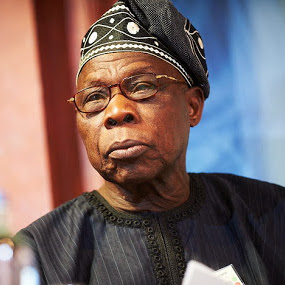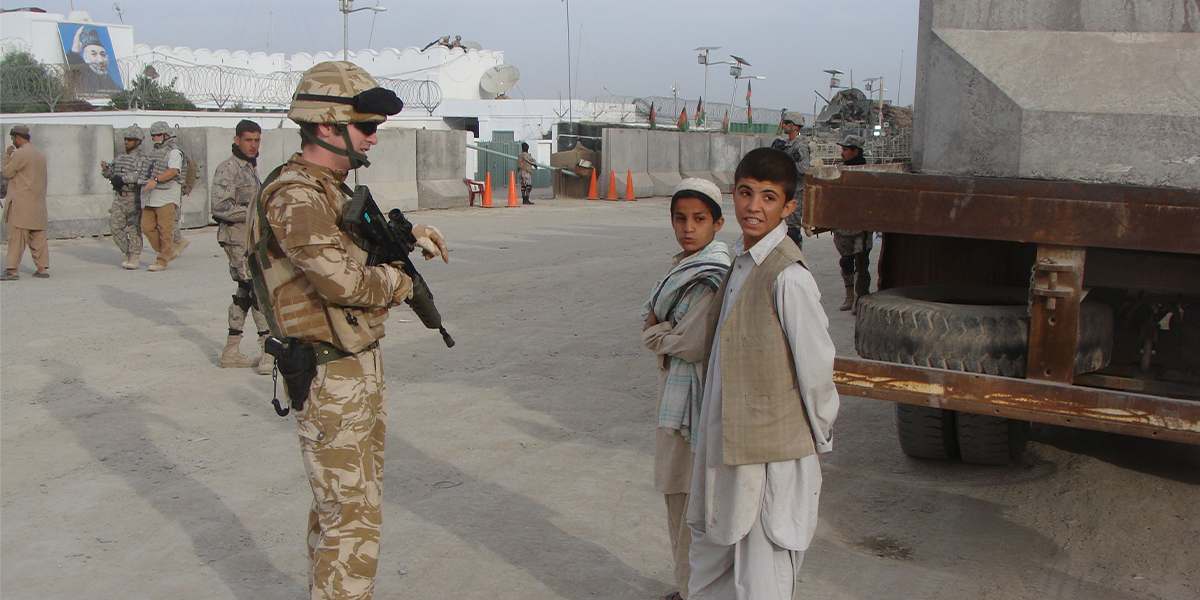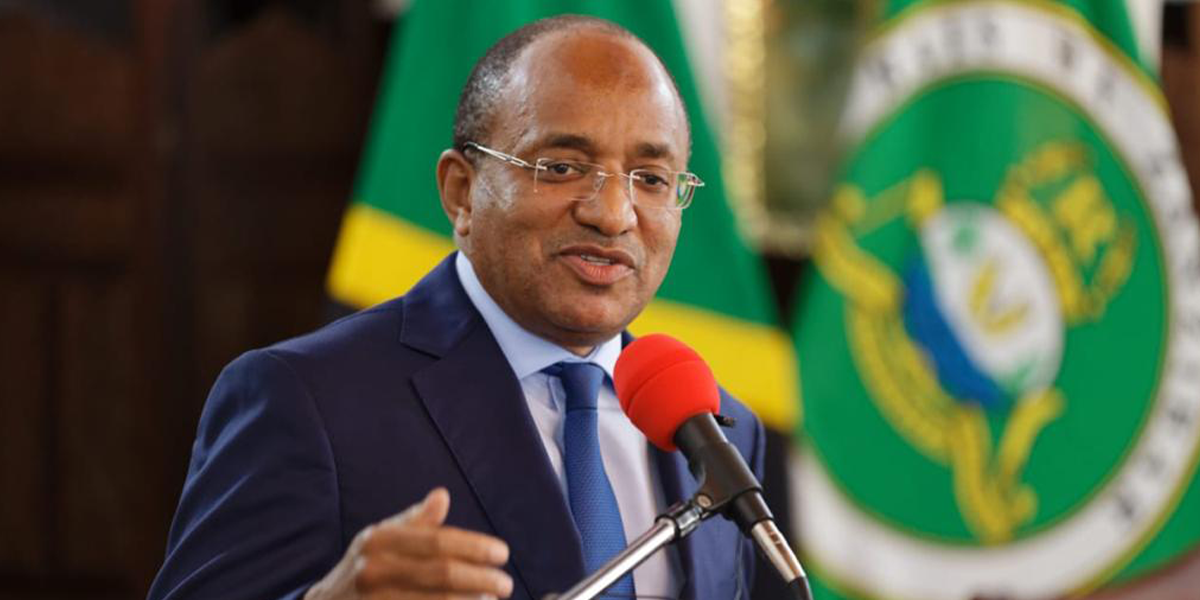News
From Afghanistan to Africa: What the West's Failure Should Teach Us
As the Taliban surges across Afghanistan, threatening provincial capitals, the failure of the West in Afghanistan will not stop at that country's borders. There will, too, be profound implications for Africa, not least in the manner whereby African governments respond to external offers of assistance and deal with their own insurgencies.

Former President of Nigeria; Chairman and Advisory Board Member Emeritus, The Brenthurst Foundation

Counter Insurgency; Urban Development Expert, Australia/US

Former Director, The Brenthurst Foundation

We have been here before.
Some 2.7 million Americans served in the official era of the Vietnam conflict from 1964 to 1975, representing nearly 10% of their generation. The in-country military total peaked at 543,482 in April 1968. Combat and other American deaths totalled 58,220 across Indochina, a figure which pales against the more than three million Vietnamese deaths during its liberation wars.
The last American soldier left Vietnam in a helicopter from the rooftop of the American embassy in Saigon in April 1975. By that time, US military supplies to the Army of the Republic of (South) Vietnam (ARVN), trained and equipped to fight a war devised by America, had dried up, blocked by a Democrat-dominated US Congress despite President Richard Nixon's promises to the contrary. The cheque was in the mail.
This left America's ally virtually helpless in the face of Hanoi's comparatively motivated and well-equipped forces.
The war did not end, however, with the liberation of Saigon on 30 April 1975. At least 300,000 South Vietnamese “counter-revolutionaries” were sent to re-education camps from which many would not return, while millions were resettled, among them 800,000 boat people.
It took little over a decade for the situation in a unified Vietnam to normalise, by which time an economic reform programme, or doi moi, had been implemented in the face of economic collapse. After a 20-year hiatus, Washington re-established diplomatic relations with Vietnam in 1995. Today the two countries are close partners in business and, remarkably, military cooperation, with trade growing from $451-million in 1995 to more than $90-billion in 2020, with US investment in 2019 an impressive $2.6-billion.
In Afghanistan, history is repeating itself.
To facilitate a high-speed American military withdrawal, Washington has made peace with its enemy, the Taliban, while not including its ally in the government of the Islamic Republic of Afghanistan in this agreement. The withdrawal of American forces, and technical teams including critical maintenance personnel, has left the Afghan National Army with inherited bases it cannot support and helicopters it cannot maintain and fly.
Washington must, at best, be hoping that Vietnam offers an analogue to its future with Afghanistan.
But even in the most optimistic of scenarios that future is a long way off.
In the short term there are tactical problems that still have to be resolved, including the movement of former Afghan allies, including officials and interpreters, to sanctuary. The Taliban has already shown that it will offer no mercy to collaborators.
President Biden, meeting Afghan President Ashraf Ghani a month ago, emphasised “enduring United States support for the Afghan people, including Afghan women, girls and minorities”, a sentiment likely of little comfort to the families of more than 100 civilians dragged from their homes and shot or beheaded in the streets of Kandahar by the Taliban this past week.
The UN assistance mission in Afghanistan noted more realistically that “civilian casualties in Afghanistan in the first half of 2021 reached record levels, including a particularly sharp increase in killings and injuries since May when international military forces began their withdrawal and the fighting intensified following the Taliban's offensive”. That mission is up for renewal this September, amid calls for an enhanced UN role that seems unlikely given how quickly the situation is deteriorating.
Refugee flows, too, will have to be supported and funded. During the peak of Taliban rule in the 1990s, the number of refugees in neighbouring countries peaked at 3.7 million. Managing the same number today would cost at least $1.7-billion annually, using the UNHCR's benchmarks.
And then there is the inestimable cost to US moral authority, credibility and legitimacy. More than 50 Nato and other countries sent troops to Afghanistan, many of whom would feel that they have been let down, entrapped in the vagaries of US domestic politics which sparked this decision to withdraw. Yet nearly 8,000 international soldiers, contractors, NGO workers and journalists have been killed in the war since 9/11, along with some 200,000 Afghans.
Charlie Wilson's War centres on a previously little-known US congressman who — somewhat unwittingly at first — takes up the cause of the mujahideen fighting the Soviet occupation in Afghanistan after their invasion in 1979. Wilson successfully campaigned for funding and arms for the mujahideen, which contributed to the Russian withdrawal in 1989.
After the war, Wilson tries to raise money for the rebuilding of Afghanistan, and he is met with far less enthusiasm. He makes the point that the really hard work is not in stopping a war or defeating an adversary, but what comes after the guns fall silent. The failure to backfill with development after the retreat of the Soviets was not lost on Wilson. As Wilson, played by Tom Hanks, puts it in the movie version of the book, “This is what we always do. We go in with our ideals and we change the world. And then we leave. We always leave.”
The cause for which Nato troops fought, and sacrificed, is being undone by political expediency. This is a bipartisan initiative, with every US president since George W Bush offering soaring rhetoric combined with half-measures in real life.
Trump's cynical deal with the Taliban — which bears a resemblance to the plan advocated by then-vice president Joe Biden back in 2009 — is now being implemented. Who would now want to be a long-term ally of the US? How much faith would one place in Washington's commitments now, including to a counter-terrorism strategy, should the Taliban take control once more?
Now, having withdrawn actual assistance, American leaders can do little more than offer helpful statements of the obvious, such as the recent suggestion by Secretary of Defense Lloyd Austin that “the first task for Afghan forces is to slow [the] Taliban's momentum”. This idea has probably already occurred to Afghan commanders, one would think, given they have been trying to do exactly that for months. Indeed, they would be doing better had the Pentagon not just abandoned its huge airbase at Bagram this past month while also cutting air support.
Recent events hint at the Taliban strategy. In their ongoing assault on the southern city of Kandahar, the fact that the Taliban are leaving open the city's eastern flank suggests that they prefer to offer the Afghan army a negotiated way out rather than fight, risking Taliban losses and expending precious ammunition.
Many districts that fell in recent weeks were already encircled, with rural areas controlled by guerrillas and government compounds — clusters of dusty buildings and shipping containers with a small police and army garrison, a lonely Afghan flag, rudimentary perimeter defences and a couple of guard towers — cut off from road access. As the overstretched Afghan air force suddenly found itself without US help, these garrisons could no longer be resupplied by air, casualties could not be evacuated, food and ammunition ran critically low and calls for assistance went unanswered. Understandably, morale plummeted, especially since civilian officials — whom the soldiers and police are there to protect, after all — have, with some honourable exceptions, mostly fled.
The Taliban has sent in local community leaders — usually well known to those in the besieged compounds — to negotiate a surrender. Given guarantees of safe passage, with no prospect of victory and no source of support, many garrisons understandably choose to do a deal. Before leaving, they often hand over weapons, ammunition and vehicles, adding to the insurgents' arsenal. The brave few who do decide to fight often lose, with the Taliban then meting out brutal punishments against survivors — beheading, mass shooting — that are amplified over social media as a message to others who might resist. Unsurprisingly, multiple districts have been abandoned without resistance.
But the lessons in military tactics and strategy don't end in Afghanistan.

There are important questions, too, for Africa, fighting wars against Islamic extremists in the Sahel, in the Horn and, more recently, in Mozambique. Faced with an unprecedented wave of different, but overlapping security crises, from kidnapping to extremist insurgencies, countries in these regions are kept together by increasingly thin layers of political glue, desperately seeking a coherent strategy for containing mounting security threats and extending governance. If anything, extremists in these countries would have been encouraged by the Taliban's advances in Afghanistan.
At one level, this should encourage us to find a diplomatic solution to the crisis; at another, it highlights several military and strategic lessons from the West's Afghan withdrawal for African governments, including the imperative to:
Set realistic goals: The West's strategy in Afghanistan was flawed and unachievable from the start. Carbon-copy attempts to emulate democracy-plus-Western-style military operations formula for peacebuilding are likely doomed to fail. In practical terms, this requires not trying to defend everywhere, and to consolidate. In governance terms, the country where stability is attempted should be placed on a realistic trajectory of representative government, not dumped in a democracy.
On the military front, rather than emulating the hugely expensive, hi-tech way of war of great powers whose resources and technical assets are simply unavailable, African governments need to focus on giving existing forces an edge over adversaries while retaining locally appropriate ways of operating. In this context, small, subtle changes — better health and welfare support, cheap but reliable radios, locally sustainable logistics and maintenance methods — are likely to pay more dividends than copy-catting allies. The result may be a military that looks and fights a lot like the adversary, but operates just that little bit more effectively and ethically.
Understand and deal with your enemy: War represents a failure of politics, thus defeating any insurgency is only accomplished not by attempting to crush it, but by understanding one's foes and devising a political solution. The critical failure of many in Afghanistan was not to make a political settlement with the Taliban in 2002.
As philosophers of war going back to Saint Augustine have pointed out, the object of war is not battlefield victory, but a better peace: a more stable, peaceful and enduring political settlement. In Afghanistan, as in Vietnam, US-led forces repeatedly achieved battlefield victories, but repeatedly failed to translate those victories into enduring outcomes. This is not a military problem, but a national (and international) one for all the world's democracies.
Assume external assistance to be fleeting and probably corrosive: Aid programmes can fuel conflict, in part by undermining the accountability and rule of law strictures on which the extension of government depends. The corruption and wastage in Afghanistan, which the West now decries, was not only permitted, but fuelled by the very nature of Western aid programmes, the idea behind them being that a surge of expenditure would enable a rapid exit.
Appreciate that peacemaking must be a regional undertaking: As The Brenthurst Foundation's current documentary on Afghanistan, The Asian Roundabout, highlights, a compliant, regional environment is critical for any peacemaking initiative to be successful. The West's presence proved a liability in this regard since it was unwilling to pressurise Pakistan, in particular, which has historically provided succour to the Taliban, since it was vulnerable to the supply route running through this neighbour. The same went for Iran, given wider political and security differences. In the aftermath of the withdrawal, China is likely to be a very major player in Afghanistan, along with Iran, Russia and perhaps India.
Employ the right tools for the job: Sophisticated Western helicopters and other air assets which the locals cannot maintain are more a hindrance than a help. The rules for external actors and local recipients alike are: a small foreign footprint, delivery of enablers (including transport, logistics support), and let the locals do the fighting and lead.
Control your own fate: Everyone is to blame for the failures that we are seeing, but the West bears a huge responsibility, in large part for failing to understand the very nature of Afghanistan, and the region, and arrogantly assuming its ways were best. Military assets are important, but more so is the will to fight, usually built on a strong connection to society and a willingness to defend values.
Save an about-turn in Western strategy towards Afghanistan now, the key lesson of the withdrawal for Africa is clear: Local ownership of the problem and the solution is imperative. Don't trust the rhetoric and commitment of outside actors. You need to plan and act towards an international exit from the start.
This article was originally published by Daily Maverick.

